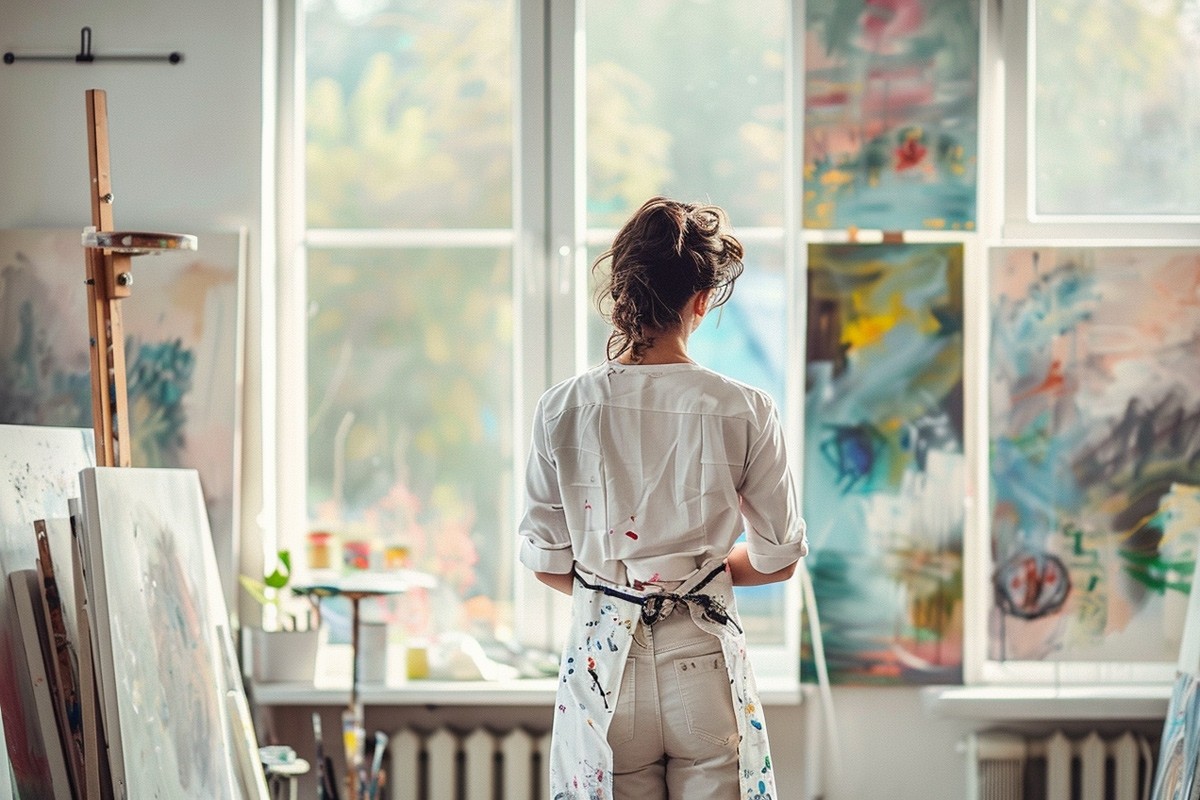Top 4 skills of a successful artist

|
By developing these soft-skills or otherwise "soft skills" the artist will be able to greatly expand their opportunities in the marketplace |
Creativity of the artist Creativity in thinking and problem solving is a key skill for an artist that goes beyond the technical ability to draw. Creativity not only helps in creating unique and memorable works of art, but also in solving a variety of problems that arise in the process. An artist must be able to find out-of-the-box solutions, whether it's fulfilling an order on an unusual theme or adapting his or her style to meet a client's specific requirements.
Communication skills play an important role in an artist's profession. Effective communication with clients, colleagues and partners is essential for the successful promotion of one's work. It is important not only to be able to present your paintings beautifully and convincingly, but also to be able to adapt your proposals to the wishes of the client, to conduct a constructive dialogue, as well as to listen and respond to feedback. This will help to build long-term relationships with customers and expand your network of professional contacts.
Awareness and understanding of trends Being observant and aware of trends in interior design and art allows an artist to stay relevant and in demand. Understanding what's on trend helps you adapt your work to current trends, which is especially appreciated by designers and decorators when decorating spaces. |
Personal efficiency and organisation
Personal efficiency and organisation are indeed indispensable qualities for an artist. In the art world, where projects can be uncertain and deadlines can be tight, the ability to plan your time becomes critical. An artist who allocates their working hours effectively and is able to manage multiple projects not only achieves better results, but is also able to maintain a work-life balance.
Adhering to deadlines is another key aspect that separates the professional from the amateur. In the art world, where your work may be part of large exhibitions or projects, being reliable in meeting deadlines builds a reputation for reliability. This is important not only for maintaining the trust of clients and colleagues, but also for securing new commissions and invitations to participate in significant projects.
Staying productive with non-standard work schedules is a particular challenge for artists, often working unusual hours or under the pressure of inspiration. Developing a personal time management system, which may include time management techniques such as the Pomodoro method or the 80/20 rule, helps to maintain focus and use each hour effectively.
Also, in creative professions, it's easy to get distracted or lose motivation due to the lack of a clear work structure. This is where establishing routines that help organise the workday and keep the creative energy flowing comes to the rescue. For example, the beginning of the day can be devoted to creating new ideas and sketches, while the second half of the day can be devoted to administrative tasks or interacting with clients.
Effective management of one's own resources and time not only increases productivity, but also contributes significantly to an artist's satisfaction with their work and life in general.
3 july 2025
| |
11 december 2024
| |
12 september 2024
| |
30 july 2024
| |
26 june 2024
| |
14 may 2024
| |
8 may 2024
| |
1 march 2024
| |
4 december 2023
| |
1 november 2023
|



